RAAF Spitfire “Down in the Trees”
After a bit of a hiatus from posting, here is my latest.
I tried to depict a scene somewhere in the SW Pacific, late in the War, with Aussie Spitfires constantly on patrol conducting low-level strafing and bombing sorties. Here a Spit has just finished a run and is on the lookout for more targets of opportunity, as a lone Japanese soldier crouches under cover. Some clever flying by the pilot will be needed to avoid those trees!
Eduard's 1/72nd "Aussie Eight" Dual Combo kit was used for the Spitfire, straight out of the box. I modified the landing gear to be in a retracted position, and created a Frankenstein pilot out of 4 different pilot figures (including a resin head from a CMK US Navy pilot). All control surfaces were repositioned to properly reflect the left bank. For the simulated propeller spinning, I cut a circle of acetate, masked it with a slightly smaller circle of tape, and airbrushed the yellow tips. I sawed the prop hub apart at the level of the prop blades, then sandwiched the clear disc inbetween the two pieces. Pastels were rubbed on to simulate the blur of the prop blades.
The base was built from insulation styrofoam, covered in plaster. Painted with various browns and then covered with several different brands of ground cover. Palm trees are a great product sold on eBay by a small company in Thailand. I slightly modified some of them and airbrushed some tones on them. Several plants were added from a laser-cut sheet (forget the brand) and grasses were added, again from a few different 'turf' manufacturers. The small lake is resin, and the waterfall is Woodland Scenics 'water effects', spread out on wax paper in wavy lines until dry, then peeled off and attached with lots of acrylic gel medium. The aircraft is held up with a piece of florist's wire, which is basically stiff wire with a green wrapping - it seemed to be a pretty good way to blend into the background. The soldier is from the old Airfix sets, and is made of that awful waxy plastic that paint does not like to adhere to. I used Tamiya primer (grey) from the rattle can, and then carefully painted it with Vallejo acrylics.
I'm getting more into dioramas of late, and really enjoy them. Next up is probably a beach or snow scene... still trying to decide!
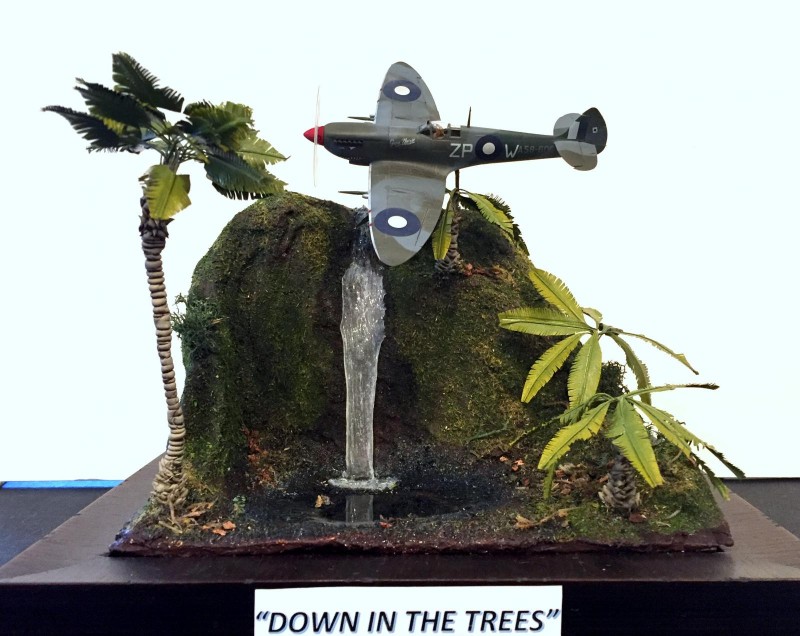
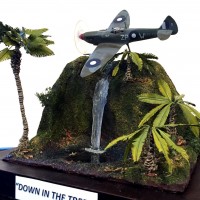
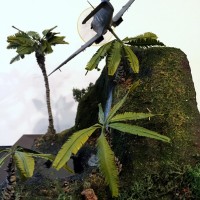
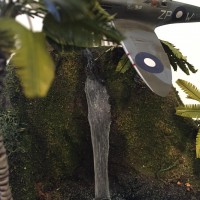

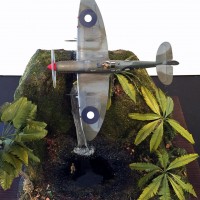
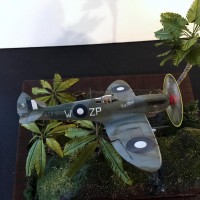

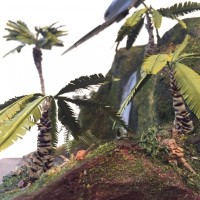

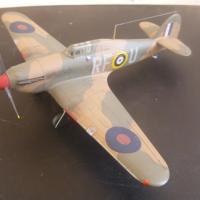

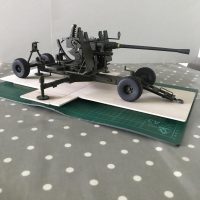
I've always had a little thing about the 'grey nurse' (stop tittering at the back...) and the Mk VIII is my favourite Spitfire. This is a lovely diorama, Paul - the closeness to the trees giving a little drama and the Japanese soldier adding a perspective shift.
Very imaginative diorama, Paul...all your work really paid off here. I like it!
Nice work on this.
Great diorama, great Spitfire!
Lovely work.
Paul,
Thanks for sharing. I think you're doing great with your dios as this looks very good! Excellent job. Great write up, always enjoy getting tips from fellow builders. I've wanted to try the prop treatment you've achieved on this Spit. Nice.
Paul, very nice work on this, I like the way the support stick is barley noticeable, and adding the crouching soldier adds a lot of character. Well done !
Thank you all for the nice comments. Hopefully it won't be so long before the next posting! The groundwork was a lot of fun to do. I have to say the Eduard Spit was an interesting kit to build. Amazing amounts of detail (better than many 1/48 kits), but the fit in many areas was less than ideal. I do love the fact that Eduard includes beautiful photoetch and canopy masks in these boxings. I understand the 1/48 Spit is a much better fit, and there is another Grey Nurse in my future in that scale!
Excellent work Paul. Eagerly awaiting your next creation!
Outstanding and a very interesting scene you depicted, Paul!
Very nice Paul! Love the Aussie scheme and roundels on the Spit.
Just excellent! great model! great display all around!
Very well done. It's great to see a different approach to displaying your Spit.
Again, excellent work. A very nice diorama of the FAA Spit. Very nice trees, water and foliage. I've always liked South Pacific settings. What I like about dioramas is the model is just the beginning. The scene it is placed in is just as challenging as the model, if not more so. Making a truly scale scene is a real challenge at which our European brethren excel.
I've long noted the major shift in model manufacturing. As the industry moved towards the "super scale" end of the spectrum, due to the geezer's demand for detail, America has pretty much divested itself of plastic model manufacturing. The best kits now come from China, Japan and Europe. HPH, Trumpeter, SWS, Wing Nut Wings are just a few notable examples of this shift. Even the old American manufactures have been bought out by European/Asian concerns.
On the aftermarket side, some of the best details come out of Eastern Europe, Eduard for example. The old Revell, Monogram, Lindberg LIne and other American manufacturers have now been superseded (or bought out) by foreign manufacturers.
When I look around the modeling club, I note that a "youngster" is between forty and fifty.
Yet I see a number of young Europeans coming in with some beautiful work. Modeling is truly an art form combining imagination, sculpting, painting, composition and many other artistic skills. It seem Americas' youth is no longer interested in developing such skills. I have tried working with a few youngsters and find their patience and attention span severely limited. These are indispensable traits that must be developed and refined when modeling. (I know, it took me many years to get there.) None ever completed a model, never mind painting one.
The other factor I suspect is playing into this decline in interest, is the average American youth's lack of historical interest. Since the lion's share of modeling is focused on historical subjects, I suspect this may well be part of the reason for the lack of interest in modeling among American youth, as few young people I have spoken with show any interest in historical subjects.
In fact I have heard comments like, "History? That's just a bunch of lies invented by dead white males." Another typical comment is, "History? What does that matter, it's past. What do I care what happened in the past? The only thing that really matters is right now!" I have even heard such comments from PhDs! Few of the people making such comments have heard of the book "1984."
“Those who control the present, control the past and those who control the past control the future.” - George Orwell ne Eric Blair.